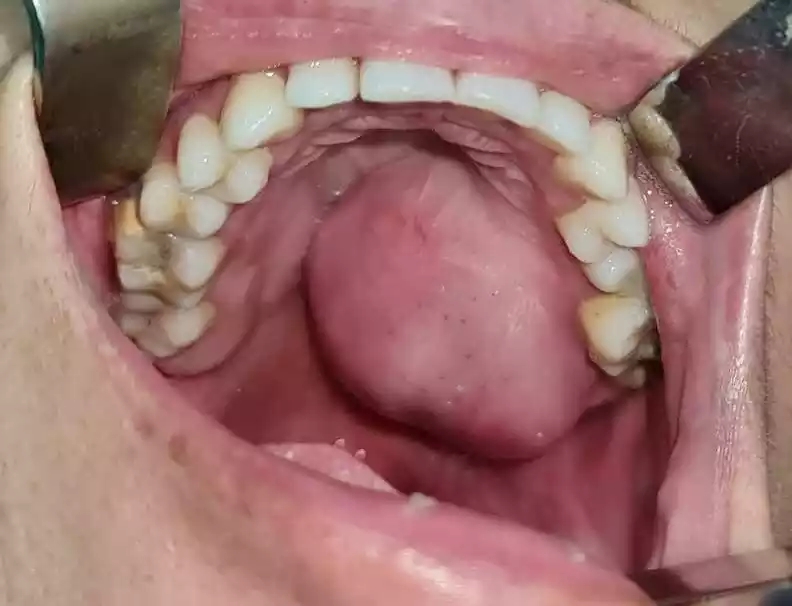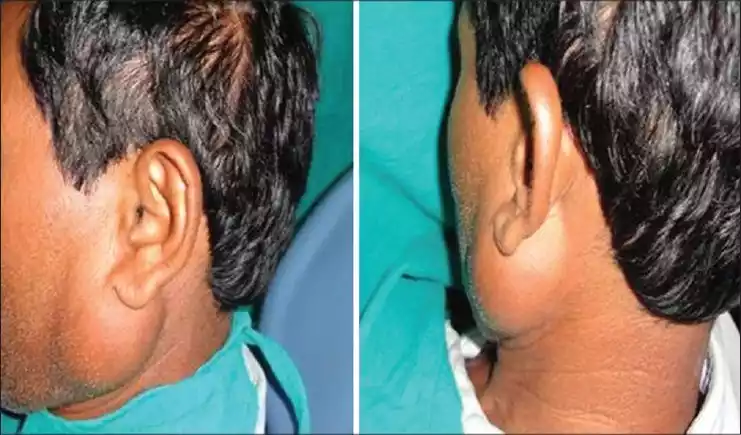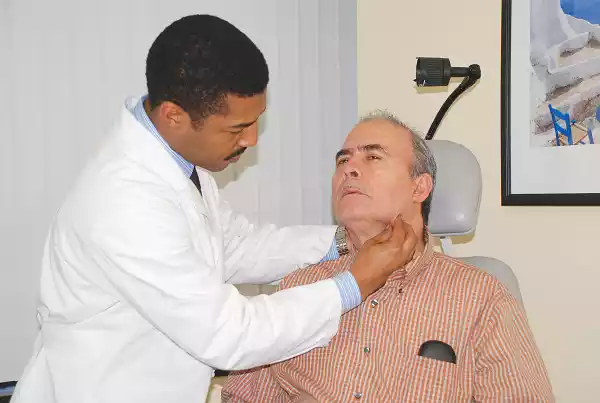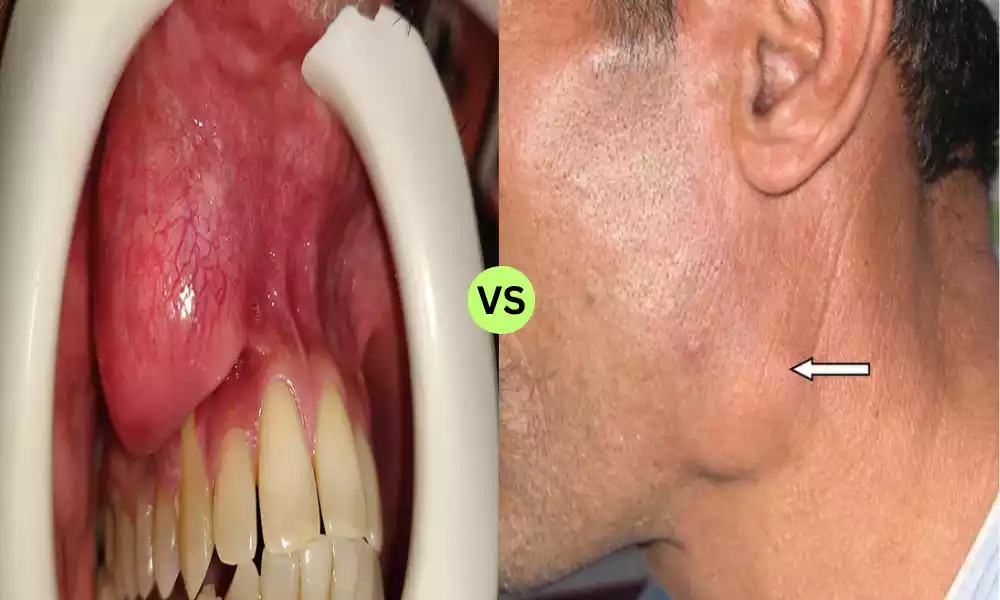Pleomorphic Adenoma and Warthin Tumor are both benign tumors of the salivary glands with distinct characteristics. Pleomorphic adenoma, the most common salivary gland tumor, is characterized by its mixed epithelial and mesenchymal composition, often arising in the parotid gland and presenting as a painless, slow-growing mass.
Warthin tumor, also known as papillary cystadenoma lymphomatosum, is the second most common benign salivary gland tumor, frequently associated with smoking and often found bilaterally in the parotid gland. It is characterized by a cystic structure with a lymphoid-rich stroma. Proper diagnosis is essential as both tumors generally follow a benign course but require different management approaches.
Definition of Pleomorphic Adenoma
Pleomorphic Adenoma is a benign tumor of the salivary glands characterized by a mixed cellular composition, comprising both epithelial and mesenchymal elements. It is the most common tumor of the salivary glands, frequently originating in the parotid gland. The term “pleomorphic” refers to its varied histological appearance due to the presence of these multiple cell types. Clinically, it often presents as a painless, slow-growing, firm, and mobile mass. While benign, it can enlarge over time and, in rare cases, has the potential to transform into a malignant tumor if not treated.

Definition of Warthin Tumor
Warthin Tumor, also known as papillary cystadenoma lymphomatosum, is a benign salivary gland neoplasm predominantly found in the parotid gland. It is characterized by a distinctive histological appearance with cystic spaces lined by a double layer of epithelial cells and a dense lymphoid stroma. Often associated with smoking, Warthin tumor is the second most common benign tumor of the salivary glands and can occasionally be bilateral or multifocal. It usually presents as a painless, slowly enlarging mass.

Comparison table of Pleomorphic Adenoma and Warthin Tumor
Here’s a comparison table for Pleomorphic Adenoma and Warthin Tumor:
| Features | Pleomorphic Adenoma | Warthin Tumor |
|---|---|---|
| Origin | Major salivary glands | Major salivary glands |
| Primary Location | Predominantly the parotid gland | Predominantly the parotid gland |
| Appearance | Mix of cell types | Cystic appearance with dense lymphoid stroma |
| Gender Predominance | More common in women | More common in male smokers |
| Symptoms | Slow-growing, painless mass | Painless, growing lump |
| Association with Smoking | None | Strong association |
| Treatment | Surgical removal | Surgical removal |
| Cancerous/Benign | Benign | Benign |
| Prognosis Post-Treatment | Good | Good |
This table provides a side-by-side comparison of the two salivary gland tumors, helping to distinguish their primary features and characteristics.
Symptoms and Diagnosis of Pleomorphic Adenoma
Here’s a detailed overview of the symptoms and diagnosis of Pleomorphic Adenoma:
Symptoms of Pleomorphic Adenoma
Pleomorphic Adenoma often presents subtly, making it a bit elusive in the early stages. As it grows, certain indications become more evident:
- Painless Lump: The most common symptom is a slow-growing, painless lump in the affected salivary gland, usually the parotid gland situated near the ears. However, it can also arise in other salivary glands like the submandibular gland or even in minor salivary glands inside the mouth.
- Facial Asymmetry: As the tumor grows, it might cause noticeable facial asymmetry, especially if it’s located in the parotid gland.
- Facial Weakness: Rarely, the tumor might exert pressure on the facial nerve, causing weakness or even paralysis of the muscles on one side of the face.
- Mouth Discomfort: If the tumor arises from the minor salivary glands inside the mouth, it may cause discomfort or interfere with chewing or speaking.
Diagnosis of Pleomorphic Adenoma
Identifying a Pleomorphic Adenoma requires a combination of clinical assessment and specialized tests:
- Physical Examination: A doctor will begin with a thorough physical examination, palpating the lump and checking for its mobility, size, and any associated tenderness.
- Imaging Studies:
- Ultrasound: This can help in determining the size and characteristics of the lump.
- MRI or CT Scan: These provide detailed images and can help in ascertaining the exact location, size, and involvement of nearby structures.
- Fine Needle Aspiration Biopsy (FNAB): This involves using a thin needle to extract cells from the tumor. The cells are then examined under a microscope to determine the type of tumor. FNAB can help in differentiating Pleomorphic Adenoma from other salivary gland tumors.
- Histopathological Examination: If there’s a surgical removal, the excised tumor will be subjected to a detailed microscopic examination to confirm the diagnosis and check the tumor margins.
- Blood Tests: While they aren’t diagnostic, certain blood tests might be done to rule out other conditions.
The diagnosis of Pleomorphic Adenoma is a meticulous process that combines the patient’s symptoms with a series of specialized tests. Early detection and timely intervention can lead to better outcomes.
Symptoms and Diagnosis of Warthin Tumor
Symptoms of Warthin Tumor
Warthin Tumor, also known as papillary cystadenoma lymphomatosum, presents with certain characteristic symptoms:
- Painless Lump: Similar to Pleomorphic Adenoma, the most prominent symptom of a Warthin Tumor is a painless lump. This lump is commonly located in the parotid gland, which is situated near the ears.
- Fluctuating Size: Some patients with Warthin Tumor have reported fluctuations in the size of the lump, especially when consuming sour foods or drinks.
- Multiple Lumps: It’s possible for individuals to develop multiple Warthin Tumors, sometimes on both sides of the face. This bilateral occurrence can distinguish it from other salivary gland tumors.
- No Facial Weakness: Unlike some other salivary gland tumors, Warthin Tumors rarely cause facial nerve weakness or paralysis, even when they grow large.
Diagnosis of Warthin Tumor
To correctly identify a Warthin Tumor and differentiate it from other salivary gland conditions, a systematic approach is adopted:
- Physical Examination: A healthcare professional will perform a detailed physical examination, assessing the lump’s consistency, mobility, and size.
- Imaging Studies:
- Ultrasound: An initial screening tool, it helps in visualizing the cystic nature of the tumor.
- MRI or CT Scan: These imaging modalities offer comprehensive visuals of the tumor, capturing its size, exact location, and the involvement of neighboring structures.
- Fine Needle Aspiration Biopsy (FNAB): This diagnostic tool is pivotal in diagnosing Warthin Tumor. A thin needle is used to retrieve cells from the tumor. When examined under a microscope, the cystic appearance of the tumor with dense lymphoid stroma becomes evident.
- Histopathological Examination: Post-surgical removal, the tumor is subjected to a microscopic examination to confirm the diagnosis and to ensure complete removal.
- Blood Tests: Although not diagnostic for Warthin Tumor, blood tests might be conducted to rule out other conditions or infections that could mimic its symptoms.
The diagnosis of Warthin Tumor is a combination of clinical evaluations and diagnostic tests. Recognizing its symptoms early and seeking prompt medical attention can aid in effective management and treatment.
Treatment Options for Pleomorphic Adenoma and Warthin Tumor
The treatment options for Pleomorphic Adenoma and Warthin Tumor are primarily surgical, but let’s break them down:
Pleomorphic Adenoma:
- Surgical Excision: This is the mainstay of treatment. Given the tumor’s propensity to send out finger-like projections (pseudopods) beyond its apparent capsule, the complete removal of the tumor, along with a margin of healthy tissue, is necessary to reduce the risk of recurrence.
- Superficial or Total Parotidectomy: Depending on the location and size of the tumor within the parotid gland, part or all of the gland might be removed.
- Follow-up: Regular follow-ups post-surgery are essential to monitor for recurrence or potential malignant transformation.

Treatment Options for Pleomorphic Adenoma and Warthin Tumor
Warthin Tumor:
- Surgical Excision: Given its benign nature, complete surgical removal of the tumor is typically curative. This often involves a superficial parotidectomy.
- Conservative Management: In some cases, especially for elderly patients or when the tumor is small and asymptomatic, the decision might be made to monitor the tumor without immediate surgical intervention.
- Follow-up: Even after surgical removal, regular check-ups are advised to monitor for potential recurrence, especially since Warthin tumors can be multifocal or bilateral.
It’s crucial to have an experienced surgeon perform the procedure due to the close proximity of important anatomical structures, especially the facial nerve in the case of parotid gland surgeries. Additionally, while both tumors are benign, ensuring complete removal is essential to prevent recurrence and, in the case of pleomorphic adenoma, potential malignant transformation.
How to Prevention of Pleomorphic Adenoma and Warthin Tumor
The exact causes of Pleomorphic Adenoma and Warthin Tumor are not fully understood, and as a result, specific preventive measures are not well-established. Some general suggestions can be made:
Pleomorphic Adenoma:
- Regular Check-ups: Regular dental check-ups or ENT evaluations can aid in the early detection of any oral or salivary gland abnormalities. Early detection and treatment can prevent complications associated with larger tumors.
Warthin Tumor:
- Avoid Smoking: Smoking is a known risk factor for Warthin Tumor. Quitting smoking or not starting in the first place can potentially reduce the risk of developing this tumor.
For Both Tumors:
- Awareness: Being aware of any lumps or swelling in the neck or oral cavity and seeking medical attention promptly can facilitate early diagnosis and treatment.
- Maintain Good Oral Hygiene: While not directly linked to these tumors, good oral hygiene practices can reduce the risk of various oral health issues and potentially decrease the chances of salivary gland infections, which might play a role in tumor development.
- Limit Exposure to Radiation: While the direct link is still debated, it’s generally a good practice to limit unnecessary exposure to radiation, which might increase the risk for various tumors, including those of the salivary gland.
- Healthy Lifestyle: Adopting a healthy lifestyle with a balanced diet, regular exercise, and avoidance of tobacco and excessive alcohol can generally reduce the risk of various cancers and health conditions.
While specific preventive measures for Pleomorphic Adenoma and Warthin Tumor are not defined, general good health practices and early detection are the best approaches to manage and potentially reduce.
Conclusion
Pleomorphic Adenoma and Warthin Tumor are benign neoplasms of the salivary glands, each with distinctive characteristics. Pleomorphic adenoma, the most common salivary gland tumor, presents with a mixed cellular composition and has the potential for malignant transformation if left untreated or recurrent after surgery. On the other hand, Warthin tumor, strongly associated with smoking and often found in the parotid gland, is characterized by its unique histological appearance with cystic spaces and a dense lymphoid stroma.
While both tumors primarily necessitate surgical intervention for treatment, their successful management hinges on early detection, accurate diagnosis, and expert surgical care to prevent recurrence and complications.



